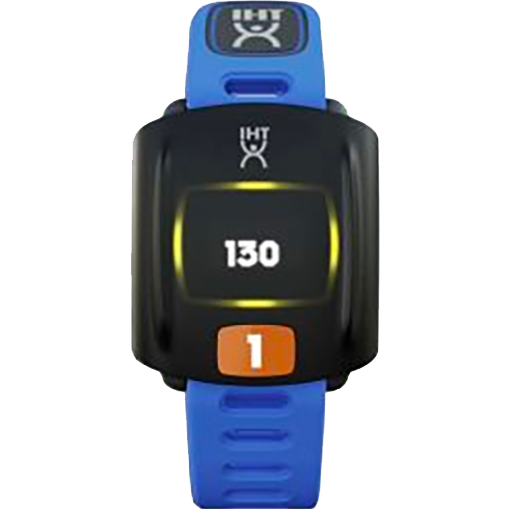Morning Programs Will Use IHT ZONE Heart Rate Monitors to Boost Physical Fitness While Improving Academic Competencies and Connection to School
An early-morning fitness club using IHT ZONE wrist heart rate monitors helps elementary students stay on task throughout the day.
Goose Bay Elementary School (Wasilla, Alaska) PE teacher Nancy Blake has overseen her school’s Early Morning Movers program, which uses exercise to push them to reach their target heart rate zones. Her goal is to send them into the school day invigorated and ready to learn.
Beginning with the new school year, Blake’s morning program will become more robust. She’ll transition the Morning Movers Program into a Cardio Club that will utilize heart rate technology four days each week.
“I’m shooting for 20 minutes in the heart rate zone before school and see if it impacts their behaviors, impacts their academics, or impacts their feeling of connectedness to the school,” Blake explained.
‘Another Opportunity to be Active Before School’
For the past decade, Blake’s run her Early Morning Movers program. Parents of interested students brought their children to school about 30 minutes before the morning bell each Tuesday and Thursday. Blake set up stations so students could enjoy some extra activity time at school.
“It gave them another opportunity to more days in the week where they can be active before school,” she said.
Last summer, while prepping for the new school year, Blake studied research on the effects that physical fitness and exercise have on the body as a whole. As demonstrated by PE teachers Paul Zientarski and Phil Lawler, students who exercised at an elevated heart rate immediately before their most challenging academic subjects found themselves more engaged and ready to learn.
“Physical activity can have both immediate and long-term benefits on academic performance,” a report published by Active Living Research found in 2015. “Almost immediately after engaging in physical activity, children are better able to concentrate on classroom tasks, which can enhance learning.”
Zientarski’s students tracked their heart rates while wearing monitors. That idea intrigued Blake, provided she could find monitors that worked for her young students. Blake’s research led her to the IHT Spirit System® and ZONE wrist heart rate monitor.
She’d used pedometers in the past and seen chest-strap heart rate monitors used in schools. But Blake wanted something a little easier for students to manage – and learn from. Once she saw the ZONE, she knew she needed it for her school.
“This gives students a science lab on their wrists,” Blake said. “It’s a little magnifying glass into their own body. The colors make all the difference.”
Education Foundation Grant Allows Inclusion of Heart Rate Monitors
 Blake approached the local Mat-Su Health Foundation, which supports teachers with funding for tools that benefit students in many ways, and won a grant to purchase ZONE monitors for her school to use with her Morning Movers program in addition to her PE classes.
Blake approached the local Mat-Su Health Foundation, which supports teachers with funding for tools that benefit students in many ways, and won a grant to purchase ZONE monitors for her school to use with her Morning Movers program in addition to her PE classes.
Shortly after the school year began, teachers and school administrators began noticing some troubling trends in key areas of student development:
- Academic readiness
- Lack of connection to school
- Appropriate behavior
Familiar with the same research Blake had uncovered, teachers approached her to recommend students who could benefit from before-school activity. While she hoped to launch the new program at the semester break, officials opted to wait until the new school year, when Blake’s Morning Movers program will evolve into the Cardio Club.
As they have with the Early Morning Movers students will wear the ZONE monitors before school. Over a 30-minute period, Blake wants to see students keep their heart rate in the target zone for at least 20 minutes. When the students return their ZONEs and head to school, parents will receive an email with their child’s heart rate data. As issues are addressed, parents will remain in the loop.
“So they have that connection,” Blake said. “What we’re is track the positive changes that we see in the kids over the semester.”
Blake hopes the trends she’s seeing in her PE class translate school-wide. The heart rate reports show students if they meet their goal for minutes of exercise in the target heart rate zones, and students celebrate when they achieve, leading to a sense of accomplishment, pride and a desire to do more tomorrow.
“It’s immediate feedback of what they did in that class and you can literally see them celebrating it,” Blake said. “It’s increasing all of the kids’ commitment to be more active, so that has just been awesome.”
Seeking IHT Spirit System information?





